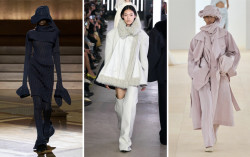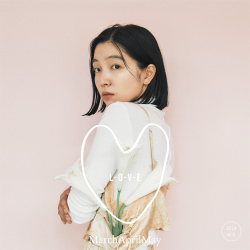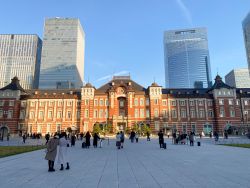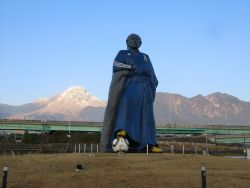

David Lee Roth on…

His Japanese tattoo:
“The tattoo is… a long-thought idea. It’s not impulsive. I grew up knowing what ukiyo-e was before I could pronounce it. It is… well, it is as Da Vinci said. ‘All the great art started here in Japan, a zillion years ago.’ I’m talking about Bob Da Vinci who owns the Subway across the street… [laughs] I see the [look on your] face! [big knee-slapping laugh]. It’s way downtown. The artists are all Japanese. They don’t speak any English at all—but they’re modern. I’m never going to be Japanese, so I didn’t get a Horiyashi-style. I’m never gonna be yakuza. I’m never gonna be samurai—well a finely-tuned Jewish samurai [laughs]. It’s excruciating to get. The average dragon takes about 20 to 30 hours—we’re goin’ on 120 on what I have goin’ on my back here.”
And how many hours are left?
“Well, you got the whole front…”
So you’re all in?
“First, let me print the disclaimer here: At the tender age of 58 going on 80 very few people care about my naked body anymore. That being stated up front—I’m now a little more interesting every time I step out of the studio…. It’s something that I’ve been thinking about and considering probably for 30 years…. I worked in collaboration with the artist. He’s in his early thirties; he’s a graduate of art school here—Nihi, out of the Sunsqlit studio. I subscribe to all the magazines. I collect all the books—and have for decades. Once I saw that signature style, I said, ‘Okay. There’s the one.’ And we’ve applied a variety of fine arts approaches to what we’re doing back there. An example: it was important to me that a Japanese hand does that work because I can tell the difference. But that being said, I brought the colors from all over the world. I have the capacity to not just locate, but to pay for—that’s one of the upsides of my day job—and we brought colors from Paris, Miami, London, New York City and California. I showed up with 14 different kinds of white: translucent white, bright white, reflective white, opaque white etc. and we laid them out like we were gonna paint a car. Having grown up in a neighborhood where watching 26 coats of hand-rubbed, pearlescent, candy-apple-red lacquer drive by two-inches off the pavement didn’t cause the blink of an eye. So we applied that approach. It’s automotive-style—multiple coats and not just the same ink over and over again. The colors I’ve got going back there are mind-blowing—but they’re framed by a classic Japanese hand. You can tell from across the room. ‘That was a Japanese hand that did that.’ The colors are from outer space… I was talking to somebody from Tribal magazine—it’s one of the tattoo magazines here—and he said, ‘How did you arrive at the colors?’ I said all I did was walk past the shoe stores for the last three blocks here [laughs]. It’s a combination of future and old school. The dragon on my back has a little bit of a smile, there’s a little bit of a modern edge to it there, at the same time, in the right lighting, it’s scary cuz I ain’t… talking… ’bout… love…”
On speaking the lingo:
“English is spoken here? Yeah right. I go to the movies frequently here because I understand movies even though I don’t speak the language. I’m in school every single day—this is Roth University, by the way […]—but going to the movies and watching something in Japanese? Folks say to me, ” Wow, how do you do that?” I go, I go to a fuckin’ opera, too—I don’t understand a syllable of that and I’m still wildly enthusiastic (or dis-enthusiastic). I find my way pretty readily here. I’ve been traveling in Van Halen—just the Van Halen su-tai-ru since… What? This is 35 years? Probably closer to 40 if you include the club years, the Beatles-in-the-Reeperbahn Golden years.”
On coming to Japan:
“Most musicians will come throughout theses parts and reflect: ‘Oh, I love Japan. I love Mexico City. Oh, I just love Paris, France, it’s just great. The people are wonderful… The food is amazing—especially the sashimi, you gotta try it—it tastes a lot like fish [laughs]. And they never come back. I prefer to transport like a racehorse: eat, sleep, run, win, eat, sleep, run, win. I’ll pick the places I’m the most wildly enthusiastic about and actually move in. Look out your window—that’s me waving. I ain’t drowning, I’m waving. And, uh, I’ve been here since last June. Not in this building, but since last June finding my way around.”
On how all his study helps:
“The most clearly evident would seem to be physically, but something as simple as, ‘I don’t blink.’ When we train in kenjutsu it’s gone serious. I have two new sets of my upper six teeth here. This is my second set and they’re like spare tires at the Indianapolis five hundred. My dentist is rich—he drives a nicer car than I do. I have a doctor on tap here who can do a mattress stitch. I have a dentist here who can stabilize (just in case) and the whole point of that is not Napoleanic force, it’s you don’t blink. Every time we make contact, vato style, every time we connect with the bamboo swords or even close draw with the real swords—if you blink, you just lost. You had a gap in your conversation. I am Van Halen’s dangerous little secret. Think of me as the Wizard of Oz with a little reverb behind the scenes and when its time to do business, the Van Halens have a very serious manager, Irving Azzof, he’s well known and I don’t have a manager. I don’t have an agent. There’s only one other guy who is my sempai, who’s Mick Jagger.”
On blending in to Tokyo:
“Most people do not know who I am when I’m here. I dress way down as you can see. I become part of the building. I’m a people watcher first and foremost. You know, if you dress like Elton John, they’re all watching you (with all due respect…). So when I approach somebody it’s just as some white guy with a smile, and I’ve had great success with that—I have a lot of fun with it. Whether it’s the guy behind the counter or just a stranger on the corner, I see that that has changed radically—at least in Nagoya, Osaka and Tokyo. I see that there isn’t so much design to become American. I see it on television: there’s as much bad acting here as there is on American television so I see some interesting developments there
On conbinis and diet:
“Of course—and they’re way advanced! 7/11, in America, has nothing on what’s going on here. I feed myself. I cook, I shop, I do grocery, etc., by and large because of my “crocodiet” as I call it. I eat like a crocodile—pretty much fish, birds, and whatever foliage got in with it [laughs]. I wish I could eat half the things I see in the window here, I just can’t do it for physical and medical reasons, you know. That being said, I am in and out of the convenience stores routinely and in out of the grocery stores and I’m delighted by it. On the other hand, I see shochu bottles that are as long as my shin bone here—right at kid level. You know they stopped walking kids past the slot machines in Vegas for the same reason. I’ve gotta wonder… I don’t know what the healthy benefit of that is. You’re walking toddlers past bottles of booze that are as long and as tall as [them] and that is a part, perhaps, of American style. The original gateway drugs are Marlboros and Budweiser [laughs]. Substitute Mild Seven and Suntory anything. It’s got its downsides. On the other hand I can’t imagine any of my favorite music being composed, recorded or performed in a smoke free environment. Historically, currently and otherwisedly.”







